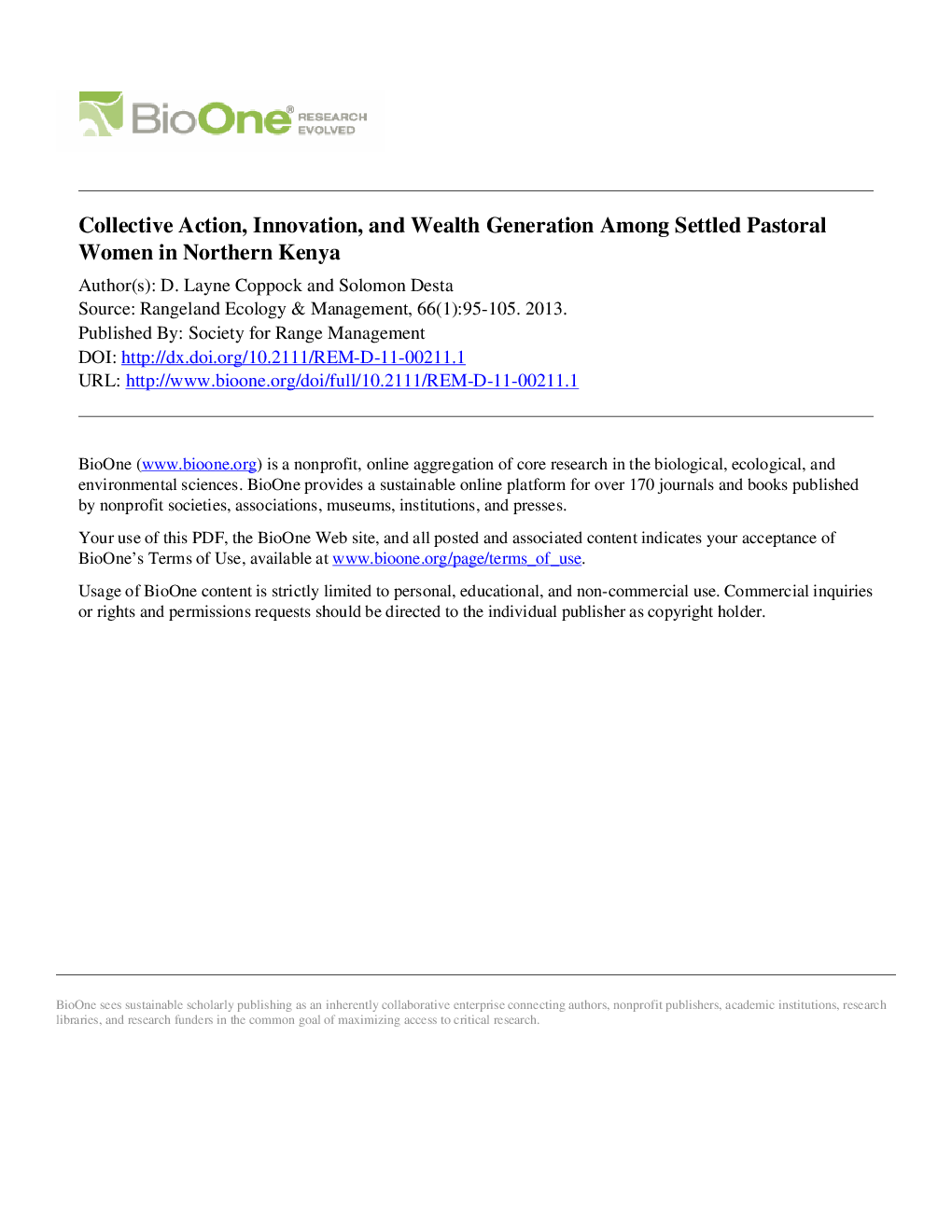| کد مقاله | کد نشریه | سال انتشار | مقاله انگلیسی | نسخه تمام متن |
|---|---|---|---|---|
| 4404183 | 1307142 | 2013 | 12 صفحه PDF | دانلود رایگان |
عنوان انگلیسی مقاله ISI
Collective Action, Innovation, and Wealth Generation Among Settled Pastoral Women in Northern Kenya
دانلود مقاله + سفارش ترجمه
دانلود مقاله ISI انگلیسی
رایگان برای ایرانیان
کلمات کلیدی
موضوعات مرتبط
علوم زیستی و بیوفناوری
علوم کشاورزی و بیولوژیک
علوم کشاورزی و بیولوژیک (عمومی)
پیش نمایش صفحه اول مقاله

چکیده انگلیسی
Collective action occurs when people join together to tackle problems of common interest. Collective action can be an effective means of group problem solving, especially among poorer residents of densely populated urban areas or farming systems. Few examples have been documented, however, for the lightly populated rangelands, where pastoralists are better known for their social independence and opportunistic behavior. We were therefore surprised to encounter dynamic women's collective-action groups in small settlements throughout north-central Kenya, a pastoral region characterized by high rates of poverty, few public services, recurrent drought, and ethnic conflict. We wanted to understand why groups were created and how they functioned. We used a semistructured questionnaire to interview representatives from 16 groups in February 2006. Results indicated that most groups had formed since the 1990s. They emerged either spontaneously or after encouragement from local development-agency staff. Founding members were exclusively women who were often illiterate and poor. Groups have elected leaders and are governed under constitutional frameworks with extensive bylaws. Groups form to improve living standards for members, and numerous success stories were noted. Groups undertake activities including microfinance, livelihood diversification, and mitigation of drought effects; they also spearhead and fund community education and health initiatives. A tally of 63 groups created over the previous 25Â yr indicated that 2 had collapsed, 47 were thriving, and 14 were failing. Group failure was most attributed to poor leadership and negative interpersonal dynamics among members, but important external threats included drought, poverty, political incitement, illiteracy, and agitation by men. In a region beset by large challenges it is notable that such grassroots innovation can help fortify social, human, and financial capital and this, in turn, can improve risk management and human well-being. Collective action should be recognized as a vital development process in Kenya's rangelands that deserves more policy-level attention.
ناشر
Database: Elsevier - ScienceDirect (ساینس دایرکت)
Journal: Rangeland Ecology & Management - Volume 66, Issue 1, January 2013, Pages 95-105
Journal: Rangeland Ecology & Management - Volume 66, Issue 1, January 2013, Pages 95-105
نویسندگان
D Layne Coppock, Solomon Desta,